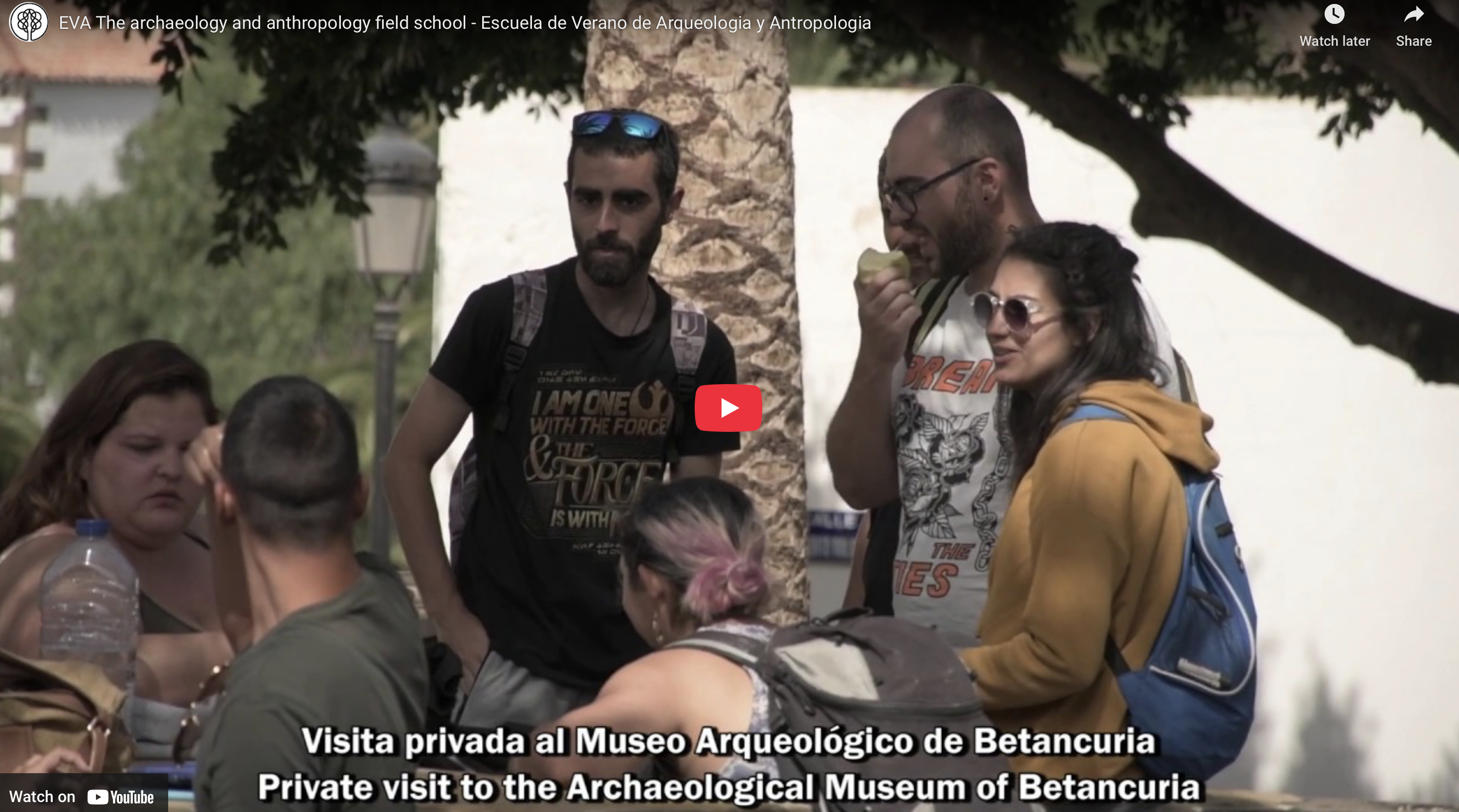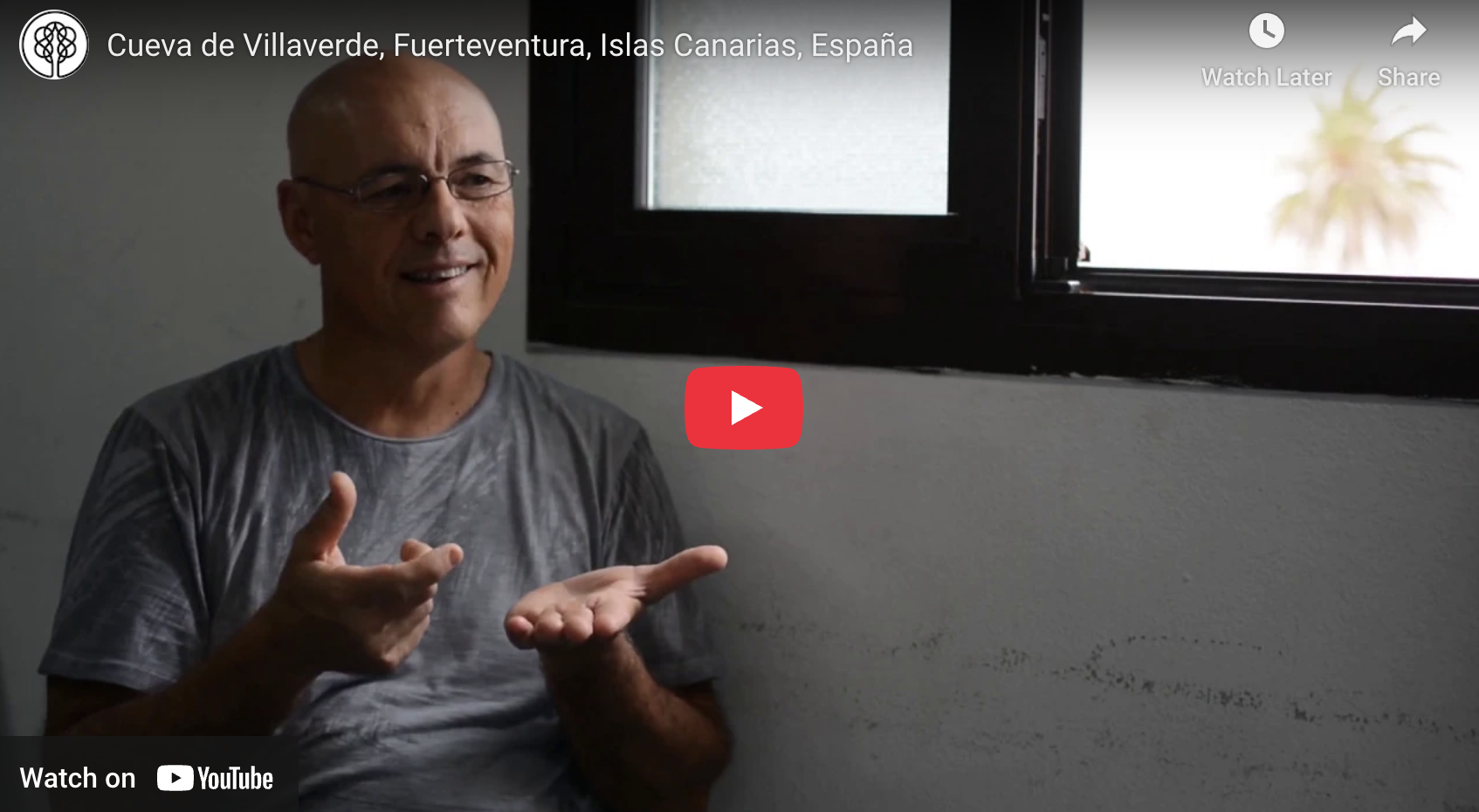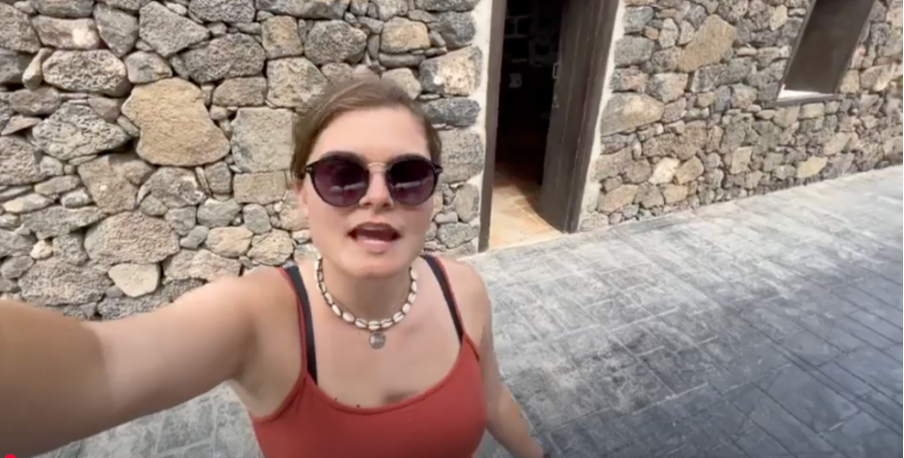Click the image above to watch a short video from the fieldschool.
The following is an account of two reports that were produced by University of Durham students during a weeklong Anthropology field course in September 2023, in the summer before their final year of study. Following an inter-university pilot in 2019 and an online option during the Coivd-19 years, the Durham University field school has run in 2023 and 2024, with a 3rd edition planned for 2025. The field reports on which this is based are an obligatory part of assessment for the module in the Anthropology curriculum.
The school’s first iteration was partially funded by the Canarian government following renewed interest in Canarian heritage in one of the archipelago’s least ‘developed’ and equally understudied islands. The initial research project formed the basis for a book chapter written by Dr. Elizabeth Rahman and published in 2022 as part of a larger compendium on pedagogy in unfamiliar landscapes (Familiar Matter Cave Heritage Sites and Their Timeful Exploration with Locals and University Students in Fuerteventura Spain). It also facilitated the production of the first in-depth ethnographic field reports such as that carried out by Marissa Gonzalez in her first year of undergraduate study at Oxford in 2019, and her accompanying ethnographic film.

The present account summaries key findings from two of the 2 of the 18 students who most participated in the 2023 course.
Each student took a different approach to establishing what it is that constitutes the cultural identity of Majoreros – the local “native” population of Fuerteventura. Tom Conlon’s fieldwork report explores how historical identity can be constructed around a fragmentary historical record and finds instead a collective story told through rituals and embodied practice far outside the bounds of written language. Jessica Newton analyses the use of music in the context of cultural festivities (la Peña) to reinforce and recreate the island’s cultural identity.
Building identity from ruins
In his first impressions of Fuerteventura, Conlon is struck by the innumerable ruins that litter the island’s landscape. He reflects on how their incompleteness captures the imagination, how it acts as an invitation to fill the gaps in their shapes and in their histories while at the same time making them resistant to interpretation. This inscrutability is mirrored in the island’s historical record, which as Conlon soon finds out is made up of fragmentary accounts that leave out long stretches of time in between them. A lecture given by one of Fuerteventura’s most prominent historians, Marcos Hormiga, highlighted this reality. It drew on the writings of Victorian travellers, merchants and artists to chronicle the influence of British mercantilism and the Spanish inquisition on the island, while being careful to point out that much about the life of inhabitants throughout history remained enveloped in mystery. The fact that the majority of the sources for this account were foreigners and that they were relatively sparse, contributed to a sense that the island had spent its time on the margins, only eliciting passing interest from major players in world history. This presents a conundrum in terms of the communal identity of Majoreros. Conlon points out that communal identity is bound to history. According to the historian Benedict Anderson, a sense of place is formed not only through geography, but also through narratives that situate a community’s existence in time. How do the inhabitants of Fuerteventura manage to craft such a story amidst a seemingly marginal and partially understood past?
At the Museo Arqueológico in Betancuria, the museum director Luis Mata gave another perspective on Fuerteventura’s history. His talk focused more on the island’s place in Classical literature, drawing on Pliny the Elder and Plutarch for depictions of Fuerteventura as a ‘happy’ and ‘blessed’ place that was also rumoured to have been the site of the Garden of the Hesperides where Heracles briefly held up the world. Conlon discusses how his narrative located Fuerteventura in the wider history of ‘Western Civilisation’, emphasising recognition by other societies as an important source of self-identity. However, the museum itself hinted at a different source of identity construction for locals.
An exhibition called ‘Our Most Ancient Self’ (Nuestro yo más antiguo) showcased how small amounts of archaeological evidence could be used to reconstruct past lives. Another titled ‘In the Dark’ (En la oscuridad) portrayed what was known about Majo funerary practices. These exhibitions conveyed a sense of place rooted in the deep past, an autochthonous narrative of communal identity. Conlon draws attention to the way scientific theories are embedded in ‘biocultural facts’. According to Wade (2020: 46), historical truths and archaeological facts are coloured by the ‘values, ideologies and meanings’ that underpin the social order. While the academic accounts of Fuerteventura’s history relied on external validation, the Maho masks on museum walls pointed to a different source of identity for Fuerteventura.
This collective sense of self is brought to life during the annual pilgrimage to La Virgen de la Peña, a sacred place on the island where a statue of the Virgin stands. The finale of the pilgrimage includes a procession featuring several different floats each dressed in a different kind of traditional Fuerteventura garb. Some are composed of animals like donkeys, camels or sheep, while others play music that reflects different aspects of the island’s culture. Conlon emphasises that the procession does not move as a single uniform group but rather as a collective of musical groups, bovine, donkey or camel floats and casual revellers each “pushing in and pulling forward” as they walk. This dynamism creates ample opportunity for encounter between people from different parts of the island in what Conlon describes as a collective engagement with fluid sociality. The pilgrimage is therefore “a unique social field through which the people of Fuerteventura can renew acquaintances and connections from every part of the island”. .
Most importantly, the rhythm of the procession itself carries footprints from the past. Conlon points out that the pace at which the shepherds lead the sheep up the winding paths of the hill hold within them the memories of pastoral ancestors. As such, the island’s history is ritually brought into the present through the actions of its people, more vividly and directly than through any written record of inhabitants’ past. Conlon’s journey therefore took him from seeing the island as conceived from the outside through to a present identity intimately linked with past generations.
Music and heritage at La Peña
Through analysing the musical practices on Fuerteventura, Jessica Newton arrives at the profound sense of self-identity held by islanders from a different angle. Starting with the pilgrimage, Newton saw how musical groups called Rondallas both structured and melted into the unfolding festivities. These collectives are usually composed of a list of members and a set-list, but allow for a high degree of flexibility. For instance, members of one group composed of a married couple and some friends would join different Rondallas or welcome others into their band as the procession took its course. As musicians come and go among these collectives, Newton argues that ‘brief kinship spheres’ are continuously being created and dissolved with the Rondallas at their centre. The core group of musicians is joined by those around them that audibly contribute by clapping or singing along. Beyond, onlookers within the festival listen and dance to the music while the rest ‘overhear’ the commotion. The music therefore becomes a link between that ephemerally connects strangers on a deeper level.
Of course, as Newton points out, there are no real ‘strangers’ on Fuerteventura. Among the members of the population who attend the festival, all have encountered each other over the years. As described by one of the women in the festival, ‘Everyone knows everyone here’. The bonds reflected in the annual pilgrimage have roots extending beyond this time of the year. The La Peña celebrations strengthen this dense web of relations through ritual. Newton uses ritual in the sense put forward by Randall Collins (2004) in his book Interaction Ritual Chains, which is to say ‘repetitive, patterned activity involving multiple participants that generates a shared emotional energy’. Whether it is shepherds walking in the rhythm of their herds or musicians sharing a common tune, these acts reflect the development and continuation of Fuerteventura’s culture through time.
Beyond the ways in which festival-goers use their instruments build social bonds, the music itself is key in shaping Fuerteventura’s deep sense of identity. For instance, the lyrics of the Rondallas reflected an emphasis on differentiating themselves from other parts of the archipelago. One popular song was about someone who’d fallen in love with a blonde girl in Lanzarote: ‘I fell in love with a blonde girl from Lanzarote’ – ‘I have a sickness of the heart’. The lyrics hint at a Romeo-and-Juliet-like tension which suggests that the romance between a boy from Fuerteventura and a girl from Lanzarote is in certain ways unlikely. This illustrates how even within the Canarian context, each island thinks of their identity in part in relation to others in the archipelago.
The local identity of Fuerteventuran culture is also reflected in the particular instruments used in the Rondallas. In her conversations with islanders, Newton often noticed similarities between their instruments and those used in North Africa and other surrounding areas. In one interaction, she points out that the round curve at the back of the wooden body of one of the string instruments along with the positioning of the frets on the neck reminds her of the North African ‘oud’, known to have had an early influence on string instruments around the Mediterranean and east Atlantic. In response, she is emphatically told that these are not the same, nor do they have any relation: “It’s not the same, this is typical of our island”. This would also happen if she referred to an instrument as Canarian, rather than being from Fuerteventura specifically.
Despite the fiercely local character of Fuerteventuran culture, Canarians still find ways of sharing in an overarching identity. The experience of a Fuerteventuran musician visiting a festival in La Graciosa is illustrative of this. A woman named Noelia was asked to play her lute with Juan Manuel Toledo, a well-known folkloric artist on the island. She told him she played in the folia style of Fuerteventura, which might hinder his music. He answered that in Canarian music, each musician plays in the way they know and eventually, everybody meets musically in the process. This anecdote highlights how there is a sense of Canarian unity to be found despite the internal juxtapositions that exist between each island’s sense of identity.
Final thoughts
In conclusion, these two reports arrive at the complexities and nuances of Fuerteventuran identity through different paths that end up crossing each other at La Peña. This yearly event is clearly a fertile cross-pollination of the island’s different integrands that results in a reaffirmation of Fuerteventura as a place with a distinct cultural history that continues to breathe new life into the island’s present day. Despite many attempts at description and categorisation from the outside, the most fundamental pillars of inhabitants’ sense of self-identity remain those that perhaps seem least tangible, but that are firmly rooted in the island’s landscape as well as its people.
¡Emocionante... - Museo Arqueológico de Fuerteventura | Facebook

